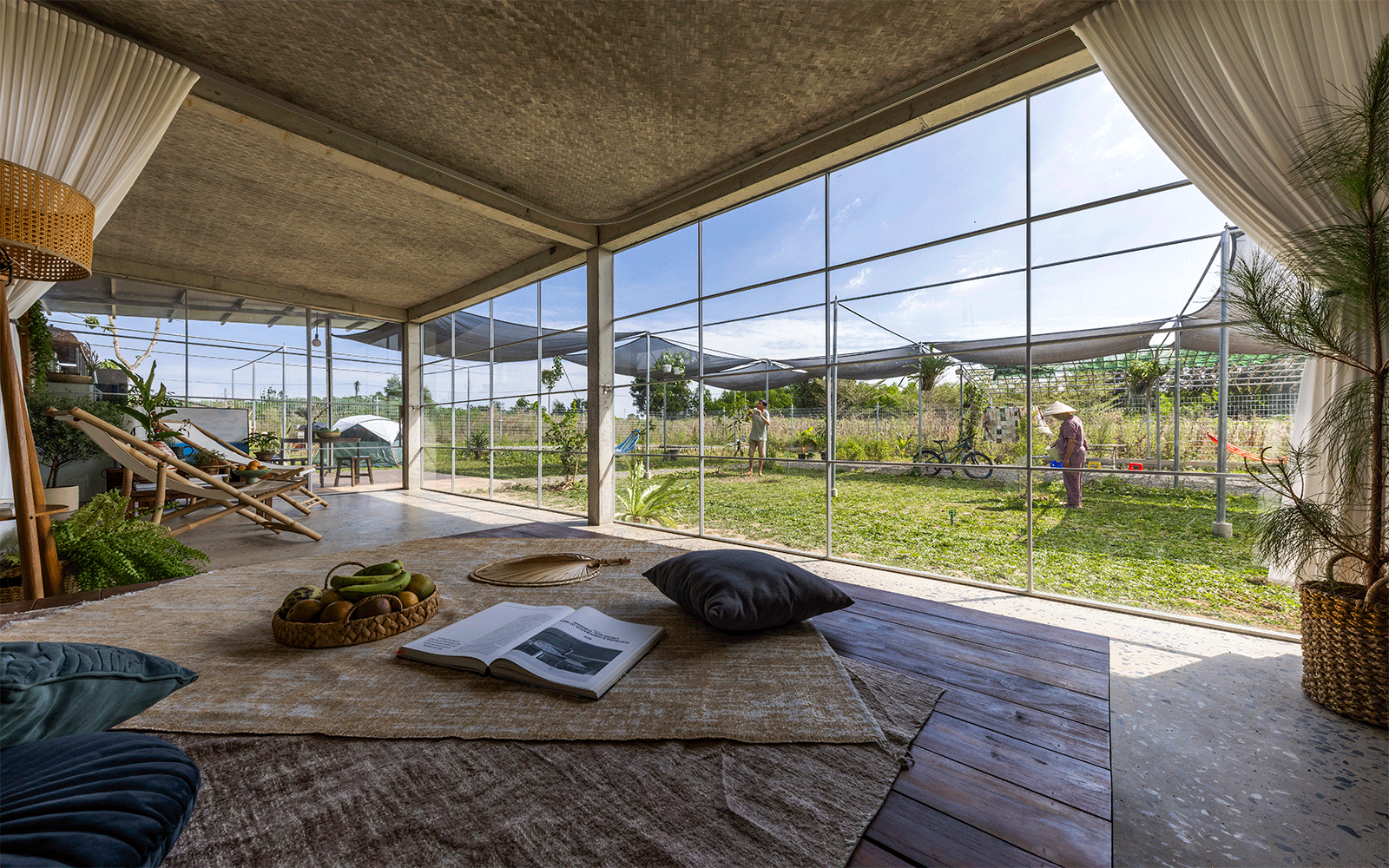查看完整案例

收藏

下载

翻译
Architects:studio anettai
Area:62m²
Year:2023
Photographs:Hiroyuki Oki
Lead Architects:Takahito Yamada, Nobuhiro Inudoh
Construction Consultant:COPPHA BUILDERS CONSTRUCTION
Architects:Moe Watanabe, Nguyen Tue Chan, Nguyen Ngoc Tu
Contractor:Nguyen Cong an
Steel Contractor:Le Tuan
Photograph Support:Nhat Tung
Curtain:Lam.weavingspaces
City:Hòa Hiệp
Country:Vietnam
Text description provided by the architects. In the middle of nowhere, a tiny house stands on a vast 1.000 m2 of land surrounded by agricultural plantations that emerge from the suburban commune. Due to this isolated location, building a house within a budget of as little as 19.000 USD meant sourcing all the materials and techniques within the local network. On the contrary, this “outer fringe of suburb” is now considered the frontline of urbanization as the residential areas grow further outwards from the centers of major cities.
Learning from the “Ordinariness"—Through observations of the surroundings, we discovered a certain knowledge accumulated and preserved in the typology of suburban houses. What they all have in common are spacious land due to the low price, a minimum box-like house set deeper inside, and a boldly large horizontal plane such as a steel roof casting shadows over them—all made of locally available resources. To make maximum use of materials and combine them to craft their own habitat as large and cheap as possible—this is what we call the suburban industrial vernacular of today. Similarly, we only sought to create a house by combining ordinary materials and learning from the ordinary world.
1000m2 of imperfect house—The necessary floor area proved to be just 5% of the land, and the remaining 95% was supposed to be left empty. Instead, we aimed to create an expansive environment full of opportunities to live on the earth. The concrete structure and block walls define the minimum interior space, while a floating steel roof overhangs to create a semi-outdoor dining and kitchen. The double roof system reduces a significant amount of solar heat radiation and the risk of water leakage, promoting natural ventilation in between.
The structural grid based on the concrete block module extends across the entire plot, where the forest of steel columns is erected. Mass-produced steel pipes were embedded in concrete footings deep enough to omit ground beams and topped with threads where translucent tarps could be installed. This detachable fabric can be easily relocated by hand to create shadows as desired, according to the solar angle that changes from south to north over dry and wet seasons. Now, the field is gradually filled up with clinging greenery, hammocks, and bamboo louvers attached to the columns, while edible plants are growing up in the local ecosystem. The client described this whole environment as “1.000m2 of house, instead of 100m2 and leftover”.
Series of weak boundaries - In the hot and humid tropics, it is more suitable to treat spatial boundaries as imperfect and collectively layer them around the space rather than making a strong singular line to enclose. To implement that, we employ various environmental factors, including not only windows and curtains but also overhanging roofs, tarps, the ground surface, and even the shadows of plants outside. We believe accepting such a series of imperfect elements and a resilient environment, as opposed to what the modern world aspires to achieve, will lead to a suitable future for the suburb.
Project gallery






















